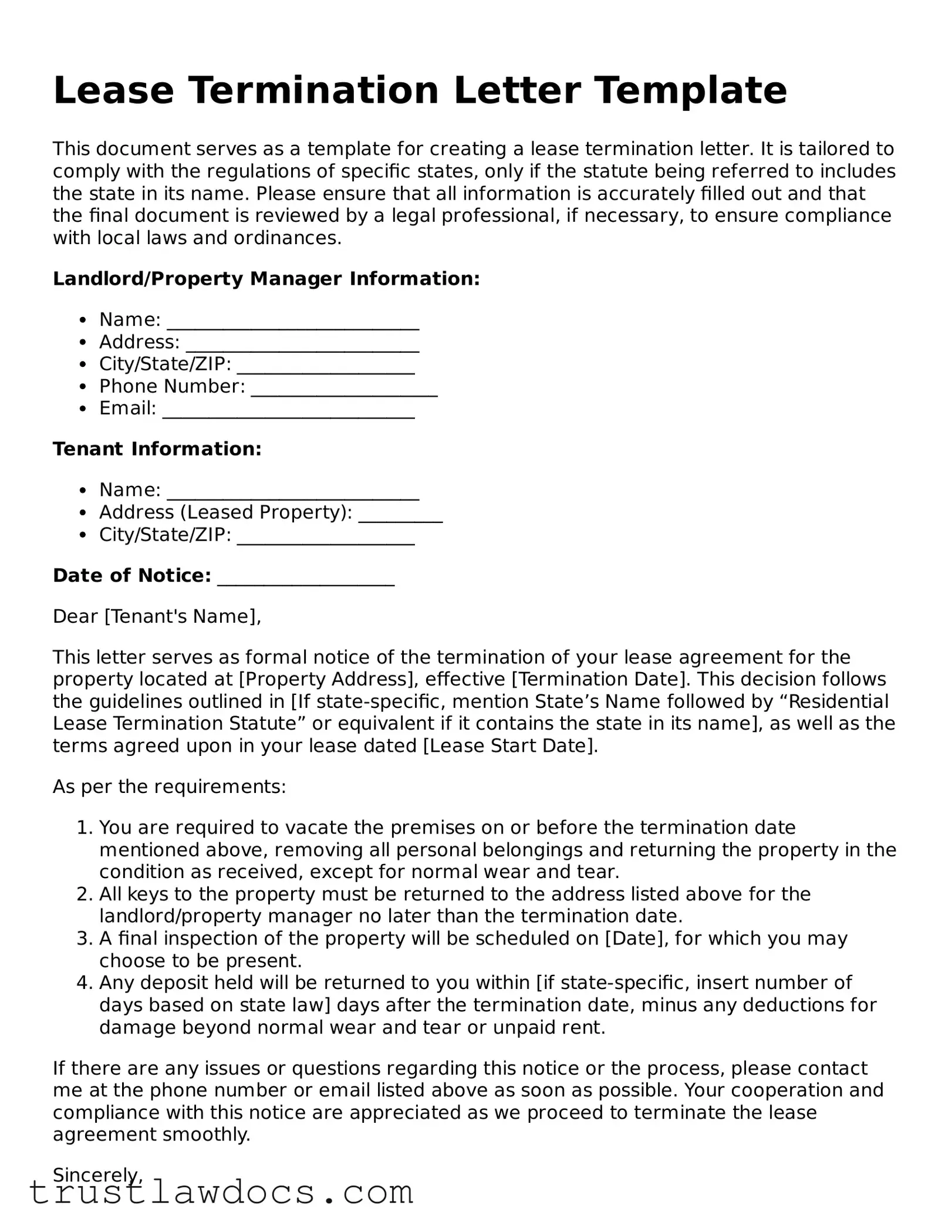What is a Lease Termination Letter?
A Lease Termination Letter is a document used by a tenant or a landlord to end a lease agreement before its original end date. This letter formally notifies the other party of the intent to terminate the lease and outlines the conditions and effective date of termination.
Why would I need to use a Lease Termination Letter?
There are several reasons you might need to use a Lease Termination Letter. For tenants, it could be due to relocating for a job, financial difficulties, or unsatisfactory living conditions. Landlords might use it if they need to sell the property, repurpose it, or if the tenant has violated lease terms.
When should I send a Lease Termination Letter?
It's important to review your lease agreement for any clauses that specify notice periods, usually 30 or 60 days before the desired termination date. Sending the letter within this timeframe ensures compliance with your lease terms and gives both parties adequate time to prepare for the transition.
What information should be included in a Lease Termination Letter?
The letter should include the lease start date, the intended termination date, a reference to any lease termination clauses you are invoking, and any other relevant information such as forwarding addresses or instructions for returning security deposits. Clarity and thoroughness are key to avoiding misunderstandings.
Can I terminate my lease early for any reason?
Early termination rights can vary by lease agreement and jurisdiction. Some agreements may have clauses allowing early termination under specific conditions, such as military service, or significant violation of lease terms by the other party. Without such a clause, both parties must generally agree to early termination.
Is a Lease Termination Letter legally binding?
Yes, a correctly executed Lease Termination Letter is a legally binding document that formally ends the lease agreement under the terms outlined within it. If the other party agrees and all conditions are met, it legally releases both parties from further obligations under the lease.
What if the other party does not agree to the lease termination?
If the other party does not agree to terminate the lease as proposed, negotiations may be necessary. Alternatively, seeking legal advice can help you understand your rights and any potential for terminating the lease without mutual agreement, based on your specific circumstances and local laws.
Do I need to have the Lease Termination Letter notarized?
While not typically required, getting your Lease Termination Letter notarized can add a layer of legal authenticity and might help in preventing disputes over the legitimacy of the document or signatures. Check your lease agreement and local laws to determine if notarization is recommended for your situation.
